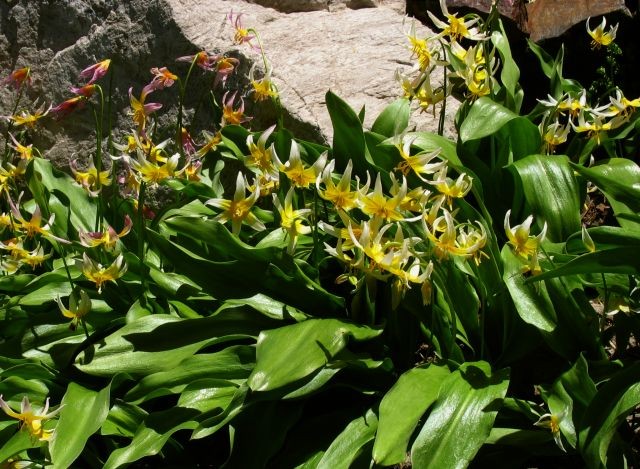Kaweah Lakes fawn lily
(Erythronium pusaterii)

Description
Erythronium pusaterii is a species of flowering plant in the lily family known by the common names Kaweah Lakes fawn lily and Hocket Lakes fawn lily. It is endemic to Tulare County, California, where it is known from only about ten sites in the Sierra Nevada. The epithet pusaterii was chosen in honor of Samuel J. Pusateri, of the College of the Sequoias, collector of the original type material This perennial wildflower grows from a bulb 4 to 6 centimeters wide and bears usually two wavy-edged, lance-shaped leaves each up to 35 centimeters long. The inflorescence arises on a stalk up to 40 centimeters tall and bears one to eight flowers. The flower has six tepals up to 4.5 centimeters long which are white at the tips and yellow drying pink at the bases. Erythronium, the fawn lily, trout lily, dog's-tooth violet or adder's tongue, is a genus of Eurasian and North American plants in the lily family, most closely related to tulips. The name Erythronium derives from Ancient Greek (eruthrós) "red" in Greek, referring to the red flowers of E. dens-canis.Of all the established species, most live in North America; only six species are found in Europe and Asia. Erythronium includes about 20–30 species of hardy spring-flowering perennial plants with long, tooth-like bulbs. Slender stems carry pendent flowers with recurved tepals in shades of cream, yellow, pink and mauve. Species are native to forests and meadows in temperate regions of the Northern Hemisphere.
Taxonomic tree:







